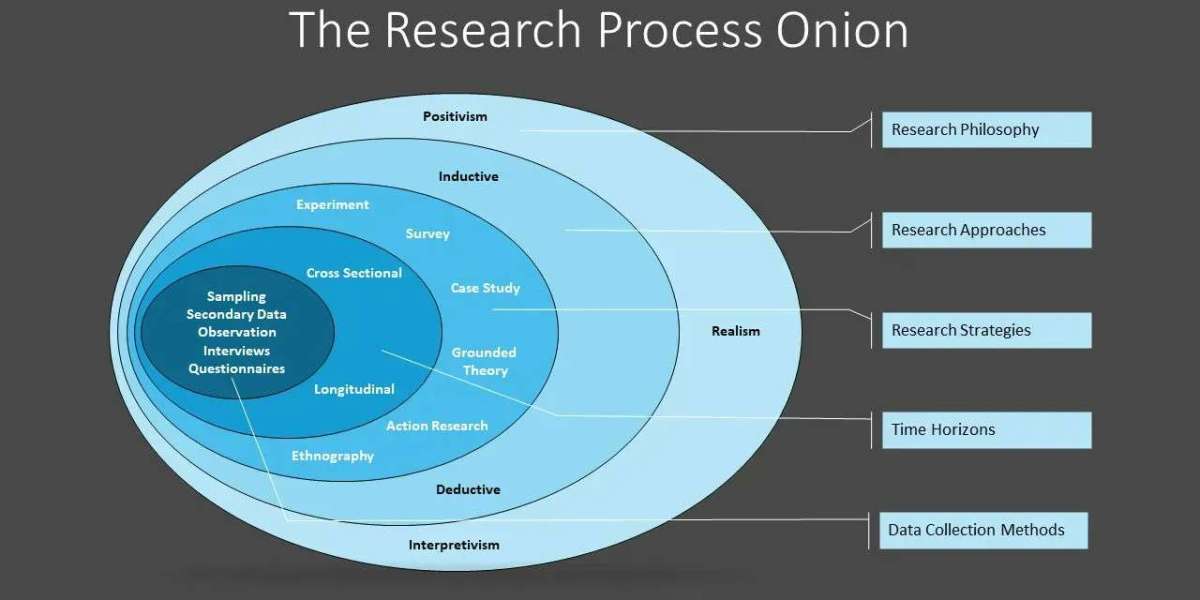The Saunders’ Research Onion is a widely recognized framework in the UK and globally, offering researchers a structured approach to designing robust research methodologies. Developed by Mark Saunders, Philip Lewis, and Adrian Thornhill, this model provides a layered, systematic way to navigate the complexities of research design, ensuring clarity and precision. By peeling back each layer of the onion, researchers can make informed decisions about their philosophical stance, research approach, strategy, and methods. This article explores the layers of Saunders’ Research Onion, breaking down its components and illustrating how it guides researchers toward methodological rigor. Additionally, we address common questions about the framework in a comprehensive FAQ section.
Understanding Saunders’ Research Onion
Saunders’ Research Onion is a visual metaphor for the research process, with each layer representing a critical decision point in designing a study. Starting from the outer layer (philosophy) and moving inward to the core (data collection and analysis), the onion ensures that researchers align their choices logically and consistently. This structured approach is particularly valuable for students, academics, and professionals in the UK, where methodological clarity is emphasized in higher education and research institutions.
The Purpose of the Research Onion
The primary purpose of the Research Onion is to provide a step-by-step guide for constructing a research methodology. It helps researchers avoid common pitfalls, such as mismatched philosophies or inappropriate methods, by encouraging a systematic approach to decision-making. Each layer builds on the previous one, creating a cohesive framework that supports valid and reliable research outcomes.
Why It’s Popular in the UK
In the UK, Saunders’ Research Onion is a staple in research methodology courses due to its clarity and adaptability across disciplines. From business studies to social sciences, the framework’s versatility makes it a go-to tool for designing research projects, particularly for dissertations and theses. Its emphasis on logical progression resonates with the UK’s academic standards, which prioritize rigor and transparency.
The Layers of Saunders’ Research Onion
The Research Onion consists of six key layers, each addressing a specific aspect of research design. Below, we explore each layer in detail, from the outermost philosophical stance to the innermost data collection techniques.
Layer 1: Research Philosophy
The outermost layer of the onion is the research philosophy, which defines the researcher’s worldview and assumptions about knowledge. Common philosophies include:
Positivism: Emphasizes objective, scientific methods to uncover universal truths, often using quantitative data.
Interpretivism: Focuses on understanding subjective experiences and meanings, typically through qualitative methods.
Pragmatism: Combines elements of positivism and interpretivism, prioritizing practical solutions over rigid adherence to one philosophy.
Realism: Acknowledges both objective and subjective realities, blending scientific and interpretive approaches.
Choosing a philosophy shapes the entire research process, as it influences how data is interpreted and what methods are deemed appropriate.
Layer 2: Research Approach
The second layer addresses the research approach, which determines how theory is used in the study. There are two main approaches:
Deductive: Starts with a hypothesis based on existing theory, testing it through data collection (common in positivist research).
Inductive: Builds theory from observations and data, often used in interpretivist studies to explore new phenomena.
A third approach, abductive, combines deductive and inductive reasoning to address complex research questions, offering flexibility for mixed-methods studies.
Layer 3: Research Strategy
The research strategy layer outlines the overall plan for conducting the study. Common strategies include:
Experimental: Controlled testing to establish cause-and-effect relationships.
Survey: Collecting data from a sample to generalize findings to a larger population.
Case Study: In-depth exploration of a single case or context.
Ethnography: Immersive study of cultural or social groups.
Action Research: Collaborative, iterative research aimed at solving practical problems.
The choice of strategy depends on the research question, philosophy, and approach, ensuring alignment with the study’s objectives.
Layer 4: Methodological Choice
This layer involves deciding whether to use qualitative, quantitative, or mixed methods. Qualitative methods focus on non-numerical data (e.g., interviews, observations), while quantitative methods emphasize numerical data (e.g., surveys, experiments). Mixed methods combine both, offering a balanced approach to address complex research questions.
Layer 5: Time Horizon
The time horizon layer considers the temporal scope of the research:
Cross-sectional: Data is collected at a single point in time, suitable for surveys or snapshots of phenomena.
Longitudinal: Data is gathered over an extended period to observe changes or trends.
The choice depends on the research objectives and resource availability.
Layer 6: Data Collection and Analysis
The innermost layer focuses on the specific techniques for collecting and analyzing data. Common methods include:
Primary Data Collection: Surveys, interviews, focus groups, or observations.
Secondary Data Collection: Literature reviews, archival data, or existing datasets.
Analysis Techniques: Statistical analysis for quantitative data, thematic analysis for qualitative data, or software tools like SPSS or NVivo.
This layer ensures that data collection aligns with the chosen philosophy, approach, and strategy, closing the loop of the Research Onion.
Applying the Research Onion in Practice
To illustrate the Research Onion’s application, consider a study exploring employee satisfaction in a UK-based company. The researcher might adopt an interpretivist philosophy to understand subjective experiences, use an inductive approach to develop new insights, select a case study strategy, employ qualitative methods (e.g., interviews), conduct a cross-sectional study, and analyze data thematically. Each decision aligns with the previous layer, creating a coherent methodology.
Benefits of Using the Research Onion
Clarity: Provides a clear roadmap for research design.
Alignment: Ensures consistency across philosophical, theoretical, and practical choices.
Flexibility: Adaptable to various disciplines and research questions.
Rigor: Promotes methodological transparency, a key requirement in UK academia.
FAQs About Saunders’ Research Onion
1. What is Saunders’ Research Onion?
Saunders’ Research Onion is a framework that outlines the layers of research design, from philosophy to data collection, to guide researchers in creating robust methodologies.
2. Why is it called an “onion”?
The model is called an “onion” because it consists of layers that must be peeled back sequentially, with each layer influencing the next, similar to peeling an onion.
3. How does the Research Onion benefit UK researchers?
In the UK, the Research Onion is widely used in academia for its clarity and alignment with rigorous methodological standards, making it ideal for dissertations and theses.
4. Can the Research Onion be used for both qualitative and quantitative research?
Yes, the Research Onion is flexible and supports qualitative, quantitative, and mixed-methods research, depending on the chosen methodological approach.
5. How do I choose the right research philosophy?
The choice of philosophy depends on your research question and worldview. For objective, scientific studies, positivism is suitable; for subjective, exploratory research, interpretivism or pragmatism may be better.
Conclusion
Saunders’ Research Onion is an invaluable tool for crafting precise and methodologically sound research, particularly in the UK’s academic landscape. By systematically addressing each layer—philosophy, approach, strategy, methods, time horizon, and data collection—researchers can design studies that are coherent, rigorous, and impactful. Whether you’re a student tackling a dissertation or a professional conducting advanced research, the Research Onion provides a clear path to navigate the complexities of research design, ensuring your study stands on a solid methodological foundation.



